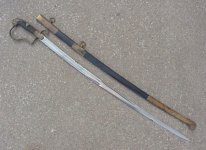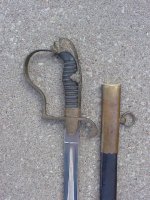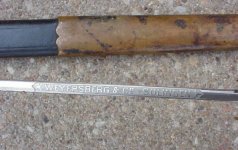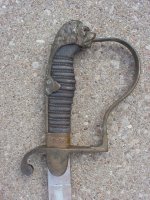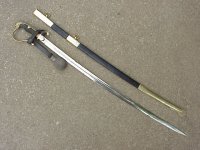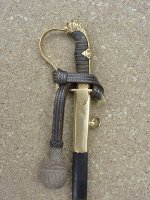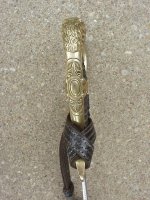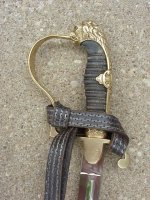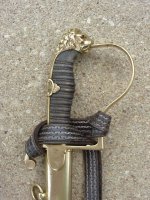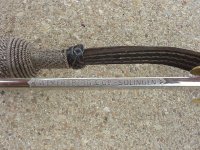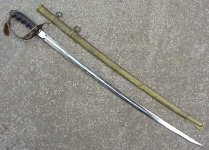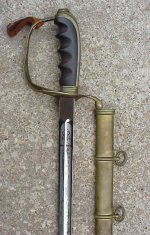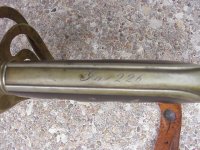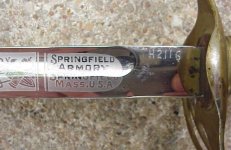SCHUPO
Well-known member
Gents,
I picked this sword up at a militaria show a few years ago because I recognized it as a common style of sword worn by German Police Departments as a "Polizei-Offizierssabel (Lowenkopfsabel)" during the time of the Empire to the time of the Weimar Republic. These swords are also referred to in period catalogs as a "Polizei-Schleppsabel fur Offiziere (Parderkopf)". The unloved sword sat in a pile of other stuff and looked pretty scruffy. I thought I could clean and polish it up to be presentable and here are the before & after results.
The sword itself is a Tombak lion head sword made by Weyersberg that originally had a polished finish. The sword never had a gilt finish so polishing the sword did not remove any remaining gilt and simply restored the sword to its originally polished brass-like finish. The grips are sharkskin and only needed cleaning with soap and water with a toothbrush. The lionhead pommel originally had two red stone eyes but one is missing and the other was cleaned with the soap and water. The blade is plated and it was in fairly good shape and was simply cleaned with 0000 fine steel wool and polished with Semichrome. The black leather scabbard was cleaned with water and an old toothbrush and the solid Tombak fittings were cleaned with ammonia like the hilt of the sword. After cleaning the fittings, they were polished with Brasso to remove the black marks and years of tarnish.
Here are some photos of the sword as I got it. Complete with old polish in the crevices and black marks and grunge eating into the Tombak fittings, All this dirt had to go.
I picked this sword up at a militaria show a few years ago because I recognized it as a common style of sword worn by German Police Departments as a "Polizei-Offizierssabel (Lowenkopfsabel)" during the time of the Empire to the time of the Weimar Republic. These swords are also referred to in period catalogs as a "Polizei-Schleppsabel fur Offiziere (Parderkopf)". The unloved sword sat in a pile of other stuff and looked pretty scruffy. I thought I could clean and polish it up to be presentable and here are the before & after results.
The sword itself is a Tombak lion head sword made by Weyersberg that originally had a polished finish. The sword never had a gilt finish so polishing the sword did not remove any remaining gilt and simply restored the sword to its originally polished brass-like finish. The grips are sharkskin and only needed cleaning with soap and water with a toothbrush. The lionhead pommel originally had two red stone eyes but one is missing and the other was cleaned with the soap and water. The blade is plated and it was in fairly good shape and was simply cleaned with 0000 fine steel wool and polished with Semichrome. The black leather scabbard was cleaned with water and an old toothbrush and the solid Tombak fittings were cleaned with ammonia like the hilt of the sword. After cleaning the fittings, they were polished with Brasso to remove the black marks and years of tarnish.
Here are some photos of the sword as I got it. Complete with old polish in the crevices and black marks and grunge eating into the Tombak fittings, All this dirt had to go.

